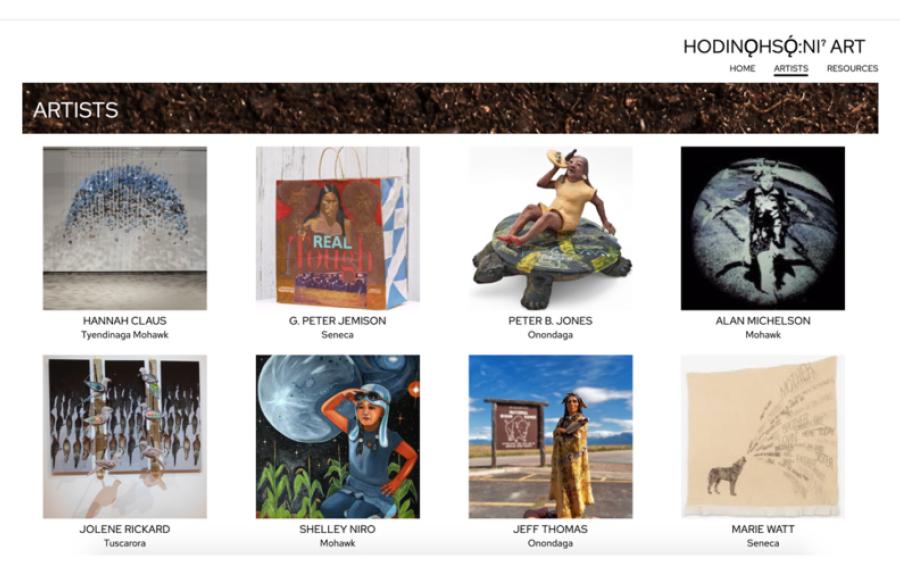Who are the Haudenosaunee People?
How might we create a website showcasing contemporary Haudenosaunee Art with respect to indigenous culture?
Research Focus
- “Extending the rafters” to a digital space of contemporary Haudenosaunee art
- Digital survey of contemporary Haudenosaunee that emulates metaphorical longhouse does not currently exist
- Addressing harmful stereotypes about Indigenous peoples as primitive or people of the past
- Addressing systemic digital divide and data organization issues
Why a Website?
- Transcends geographical and temporal limits for accessibilitMore frequently update to reflect contemporaneity than printed
- Inherent permanence
- Need for more videos and photos of contemporary artists online to assert Haudenosaunee presence in the present and future
- Work to close digital divide and language divide
Technology and the Systemic Digital Divide
- Beneficial opportunities for intergenerational exchange of knowledge
○ Languages through recordings or dubbed movies
○ Social media videos of drumming, dancing, and instructional videos about traditional practices
- Information and communications technologies can be used to assert Indigneous sovereignty and self-determination by assisting with sharing information
- Some incompatibilites with Indigenous traditions to be aware of
○ Elders may not have adequate access to Internet on the nation territories where they live
○ Disproportionate lack of digital infrastructure in Indian Country compared to other communities across settler spaces like the US
- Nation territories in regions with destructive weather patterns or topography difficult for installing digital infrastructure
- Systemic marginalization and impoverishment make expensive infrastructure more challenging
○ Digital divide is tool of settler colonialism to disconnect communities and weaken movements to assert sovereignty
Language Divide: Terminology and Algorithmic Organization
- Google recognizes 30 European languages and one African language and no Indigneous American of Pacific languages
○ Perpetuates inequality in information that is shared and learned through disproportionately English space
- Search terms are complicated by dated, Europeanized terms (e.g. “Iroquois” for the Haudenosaunee people) and the use of diacritics for words like Gayogo̱ hó:nǫʔ (Cayuga)
○ Use of outdated terms still very prevalent in information organization
- For example, all subject matter in libraries pertaining to Indigneous peoples is found under “Indians of North America” with E call numbers
- A contemporary Haudenosaunee art exhibition catalog is found under an E99 call number rather than around N6490 with all other contemporary art materials
- System isolates Indigneous materials and encourages hegemonic understanding of Indigeneity
- Current Google Images search for “Haudenosaunee” yields images anchored in the past
The Website
- Banner images convey three main levels of the world in Haudenosaunee cosmology: the sky, the earth, and the water
- Landing page mixes photos of the artists and a variety of bold artworks in a diverse range of media to influence the user’s perception of Haudenosaunee art
- Font “Red Hat Text” is sans-serif which suggests modernity and sophistication
- Coded from scratch using HTML, CSS, and JavaScript for most amount of control possible
- Considers how each artist wants to be represented in a public, digital space


